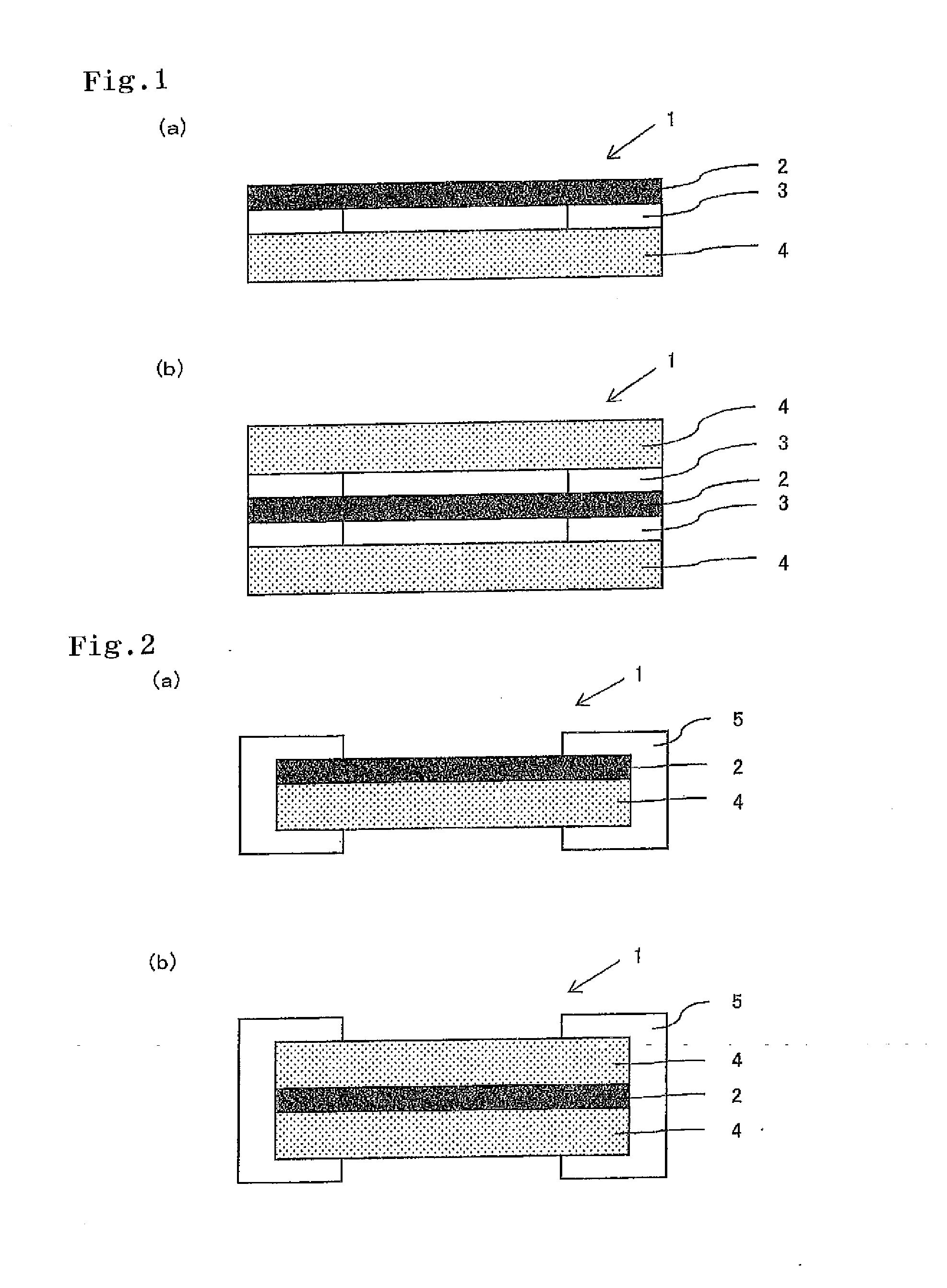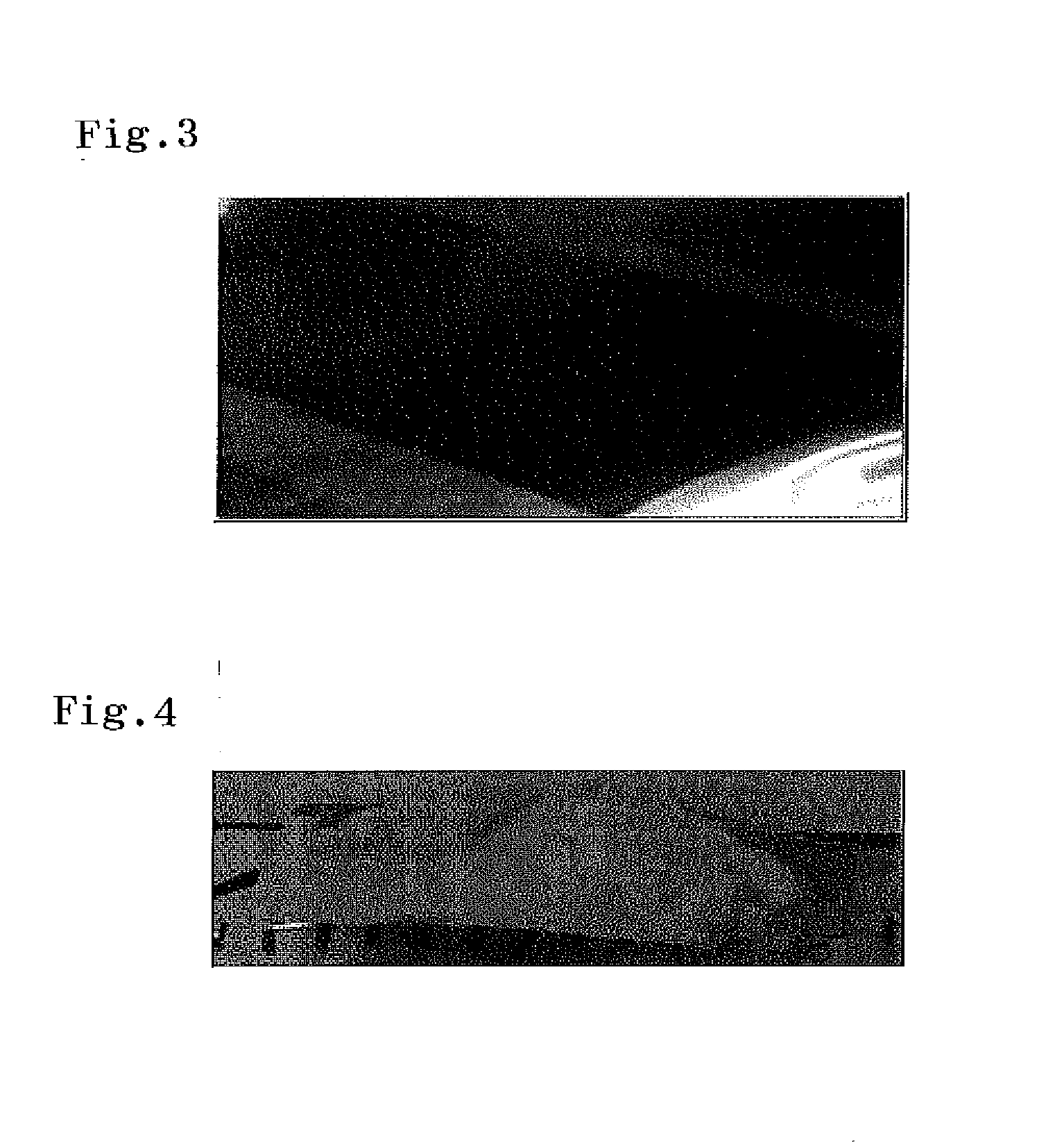Hydrogen-releasing film
a technology of hydrogen-releasing film and releasing film, which is applied in the direction of metal layered products, synthetic resin layered products, electrical appliances, etc., can solve the problems of amorphous alloy becoming brittle, internal pressure increase risk of outer case rupture, etc., and achieve the effect of prolonging the life of electrochemical elements and reducing internal pressur
- Summary
- Abstract
- Description
- Claims
- Application Information
AI Technical Summary
Benefits of technology
Problems solved by technology
Method used
Image
Examples
example 1
[Preparation of Hydrogen-Releasing Film by Rolling Method (Content of Cu: 53 mol %)]
[0050]The raw materials Pd and Cu were each weighed so that the content of Cu in an ingot became 53 mol %, charged into an arc melting furnace equipped with a water-cooled copper crucible and subjected to arc melting in an Ar gas atmosphere under atmospheric pressure. The obtained button ingot was cold-rolled to a thickness of 5 mm using a two-stage rolling mill having a diameter of 100 mm to obtain a rolled sheet material. Then the rolled sheet material was placed in a glass tube and the both ends of the glass tube were sealed. After reducing the inside pressure of the glass tube to 5×10−4 Pa at room temperature, the temperature was then raised to 700° C. and the glass tube was allowed to stand for 24 hours, followed by cooling to room temperature. By this heat treatment, the segregation of Pd and Cu in the alloy was removed. Then, the sheet material was cold-rolled to 100 μm using a two-stage rolli...
example 2
[Preparation of Hydrogen-Releasing Film by Rolling Method (Content of Cu: 30 mol %)]
[0051]A hydrogen-releasing film containing Pd—Cu and having a thickness of 25 μm and a Cu content of 30 mol % was prepared in the same manner as in Example 1, except that the raw materials Pd and Cu were respectively used so that the content of Cu in an ingot became 30 mol %. When the hydrogen embrittlement of the hydrogen-releasing film was evaluated in the following manner, appearance changes such as distortion were not observed.
example 3
[Preparation of Hydrogen-Releasing Film by Rolling Method (Content of Cu: 65 mol %)]
[0052]A hydrogen-releasing film containing Pd—Cu and having a thickness of 25 μm and a Cu content of 65 mol % was prepared in the same manner as in Example 1, except that the raw materials Pd and Cu were respectively used so that the content of Cu in an ingot became 65 mol %. When the hydrogen embrittlement of the hydrogen-releasing film was evaluated in the following manner, appearance changes such as distortion were not observed.
PUM
| Property | Measurement | Unit |
|---|---|---|
| pore diameter | aaaaa | aaaaa |
| temperature | aaaaa | aaaaa |
| thickness | aaaaa | aaaaa |
Abstract
Description
Claims
Application Information
 Login to View More
Login to View More - R&D
- Intellectual Property
- Life Sciences
- Materials
- Tech Scout
- Unparalleled Data Quality
- Higher Quality Content
- 60% Fewer Hallucinations
Browse by: Latest US Patents, China's latest patents, Technical Efficacy Thesaurus, Application Domain, Technology Topic, Popular Technical Reports.
© 2025 PatSnap. All rights reserved.Legal|Privacy policy|Modern Slavery Act Transparency Statement|Sitemap|About US| Contact US: help@patsnap.com



